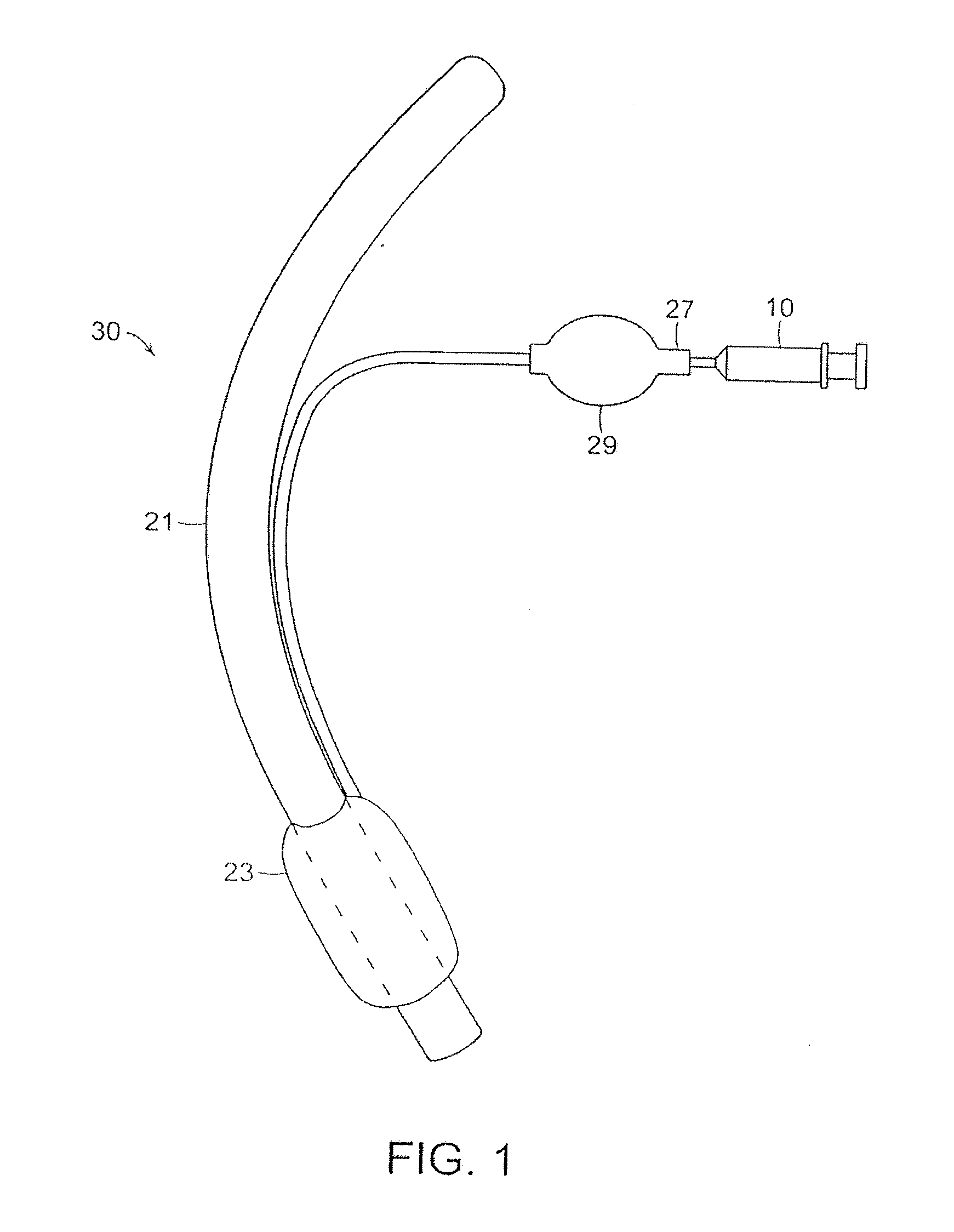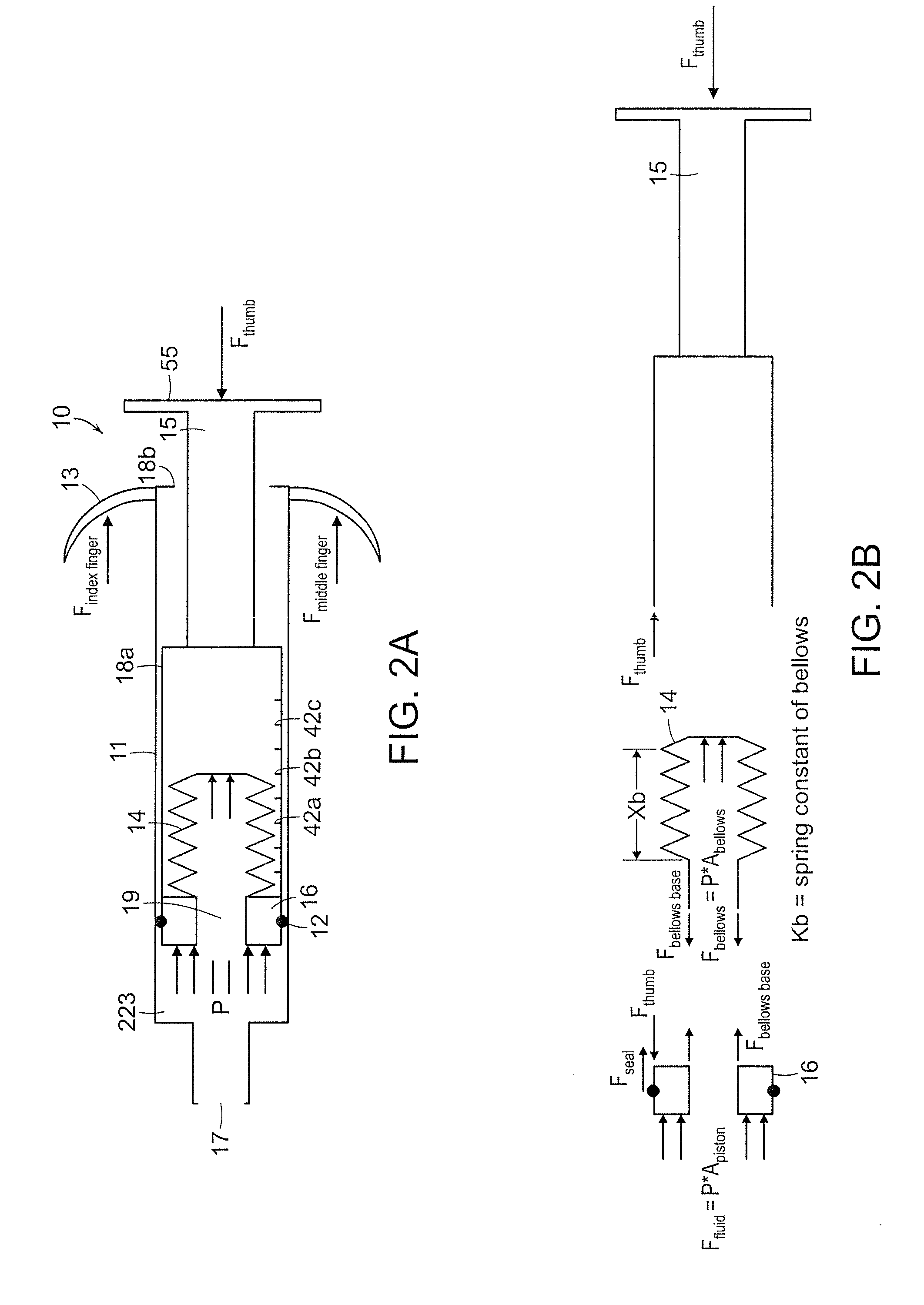Pressure measuring syringe
a technology of pressure measuring and syringe, which is applied in the direction of manufacturing tools, instruments, catheters, etc., can solve the problems of mucosal ulceration, scarring and rupture of the trachea, over-inflated cuffs, and other serious conditions
- Summary
- Abstract
- Description
- Claims
- Application Information
AI Technical Summary
Benefits of technology
Problems solved by technology
Method used
Image
Examples
Embodiment Construction
[0036]This application claims the benefit of U.S. Provisional Application No. 61 / 144,956, filed Jan. 15, 2009, the entire teachings of which are incorporated herein by reference.
[0037]The invention comprises a syringe 10 having an internal pressure gauge, and can be used in connection with an endotracheal tube assembly 20, such as is schematically illustrated in FIG. 1. The endotracheal tube assembly 20 includes an elongated tubular member 21 that can be inserted into the windpipe (trachea) of a patient to provide an open air passageway to and from the patient's lung(s). Typically, the tube assembly 20 comprises an inflatable cuff 23 near the distal end of the tubular member 23. The cuff 23 is generally in an un-inflated state when the assembly 20 is introduced into the patient's trachea. The cuffs currently in use are referred to as high volume and low pressure, such as those manufactured by Portex, Ltd., Hythe, U.K. The cuff volume can be in the range of 15 to 20 cc when fully inf...
PUM
| Property | Measurement | Unit |
|---|---|---|
| thickness | aaaaa | aaaaa |
| volume | aaaaa | aaaaa |
| volume | aaaaa | aaaaa |
Abstract
Description
Claims
Application Information
 Login to View More
Login to View More - R&D
- Intellectual Property
- Life Sciences
- Materials
- Tech Scout
- Unparalleled Data Quality
- Higher Quality Content
- 60% Fewer Hallucinations
Browse by: Latest US Patents, China's latest patents, Technical Efficacy Thesaurus, Application Domain, Technology Topic, Popular Technical Reports.
© 2025 PatSnap. All rights reserved.Legal|Privacy policy|Modern Slavery Act Transparency Statement|Sitemap|About US| Contact US: help@patsnap.com



